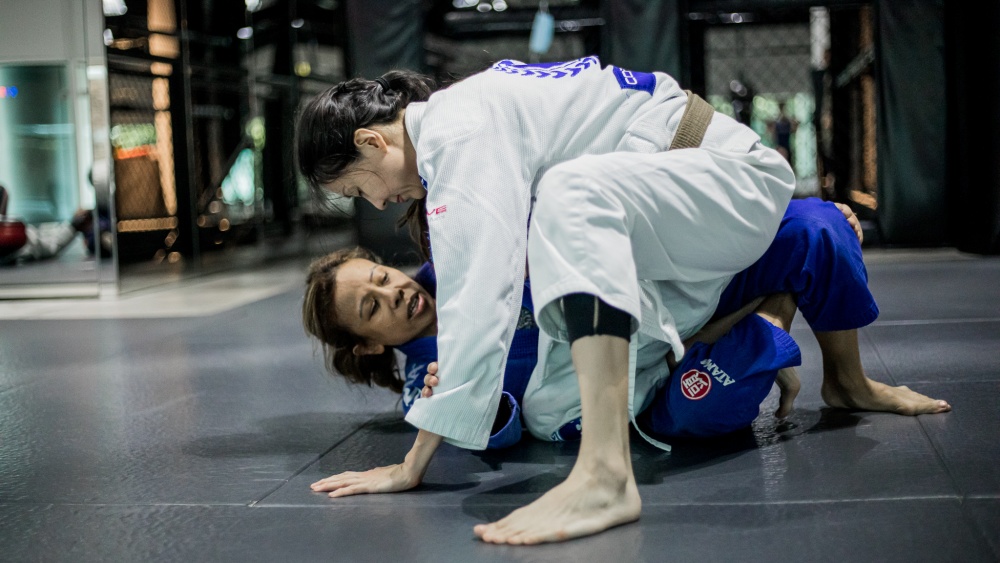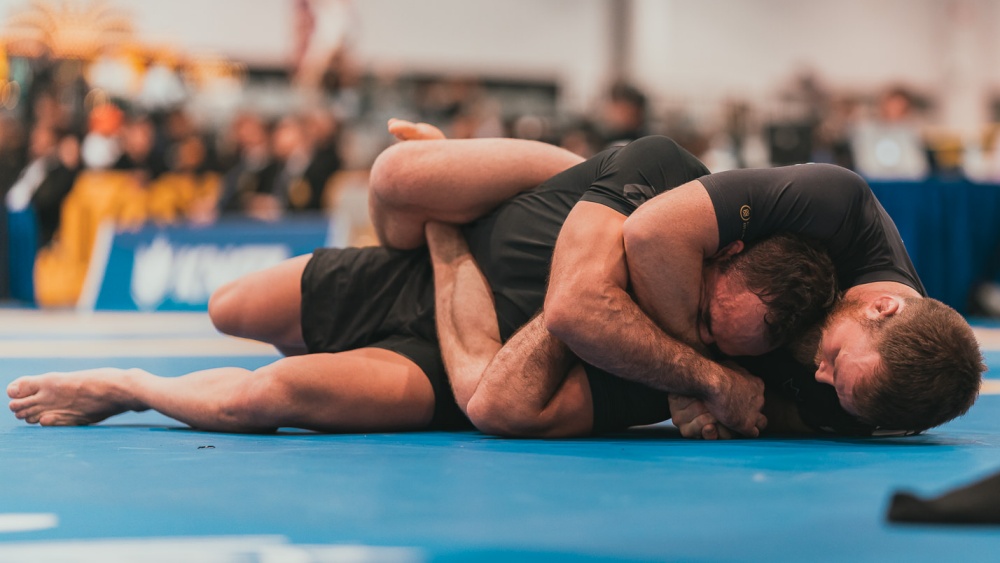Pinning the opponent is one of the most essential skills in grappling, including Brazilian Jiu-Jitsu. To define, a pin is where you use your body configuration and gravity to control a fully resisting opponent. Renowned coach John Danaher famously said, “The basis of Jiu-Jitsu’s interpretation of pins is the idea that pins should reflect the degree to which a pin allows the dominating athlete to strike an opponent while not being struck back.” This means that the better your position is relative to your opponent’s, the more opportunities you have to initiate an attack.
One of the most annoying pins in BJJ is the cross-side position, also known as side control. It is a position that many BJJ practitioners struggle to escape from. Today, we’ll discuss several options you can do to safely escape this dreaded pinning technique.
Side Control Defined
Let’s go over the definition of side control. Simply put, side control is a grappling pin where the top player is lying perpendicularly over the opponent, usually in the chest-to-chest position. The one on top uses their bodyweight and arms to put immense pressure on the bottom player’s torso, thus forcing them to defend or escape the position. The legs are usually not entangled, as most of the engagement uses the upper body.
The side control pin is preferred by most beginners and larger BJJ players because escaping the pin can be tricky. The inherent stability of being in top side control makes it quite formidable in terms of controlling a fully resisting person. If you like to go to side control, you don’t have to worry about counters like the upa escape (a basic yet useful reversal from bottom mount).
Now that we understand what side control means, let’s dive into the essential techniques you need to learn to escape the position.
3 Recommended Side Control Escapes
In this video, 10th Planet Blackbelt and coach Brandon Mccaghren share his top side control escapes for beginners (and many intermediate practitioners). He is known for his highly technical instruction and is an excellent representative of our sport overall.
Knee-In Escape
The first escape he shows is the basic knee-in escape. He mentions that the most crucial step in this technique is to get the inside position by inserting your elbow and forearm near the pocket of their far hip. You can do this by placing your arm against the side of the opponent’s head as you bridge to the side. This will create space for you to insert your frames, and eventually your knee. You can do this movement many times as needed, especially when you are against much larger opponents. Once you successfully insert your knee, you can now use the shrimping movement to get back to any form of guard.
Backward Roll Escape
The second escape is the backward roll escape. It is similar to the first technique in many ways, but you initiate a backward roll movement instead to make space for your knee. Start by bumping your opponent’s head with your arm, like in the first technique. Immediately place your knee near the opponent’s hip as you move; this should create space for your knee once you fall back. Move your head away from here to prevent the cross-face and shrimp back to recover guard.
Ghost Escape
The last technique Brandon shows is the classic ghost escape. The ghost escape is typically used once the opponent places their arm over your head, and is a great technique to displace the opponent’s bodyweight. Move the arm that’s framing against the opponent’s hip to the opposite side as you block the head with your other arm. Use your legs to swing and gain momentum as you use a scissoring motion with your arms so that you can escape the hole. You can do this in 1 swift move; doing small swings can also work. Once you escape your head, you can establish the front headlock and begin your offensive cycle. You can even catch the opponent with a D’Arce Choke mid-transition if the opponent is unaware.
Tips To Survive A Crushing Side Control Pin
Now, we need to be very clear: while these 3 techniques are applicable against all opponents, performing them in live sparring can be challenging at times. Here’s our game plan in case you get stuck in bottom side control.
Use Your Frames And Stay Mobile
Create frames with your arms and legs to create space between you and your opponent. Keep your elbows tight to your body, and place your hands on your opponent’s hips or chest to push them away. Use your hips actively to shrimp (move your hips away) and create space. Bridge and shrimp to create angles that make it harder for your opponent to control you.
Protect Your Neck
Keep your chin tucked to protect your neck from chokes and submissions. Your opponent may try to set up a North-South choke or an arm triangle, so be vigilant in defending your neck. Use your hands and arms to create barriers, preventing your opponent from getting a grip on your collar or neck. Hand-fighting is crucial to protect against chokes.
Monitor The Opponent’s Hips

Framing is a fundamental concept in BJJ, designed to thwart potential advances or submission attempts from your opponents.
Use your frames to control your opponent’s hips. One common method is to use your inside knee and elbow to control their hips, preventing them from transitioning to more dominant positions. Be aware of your opponent’s attempts to isolate your arms or set up submissions. Keep your elbows tight to your body to minimize the risk of arm attacks.
Remain Relaxed and Technical – Panic can lead to mistakes. Stay calm, focus on breathing, and think about your next move. Breathe deeply and methodically to conserve energy. Look for opportunities to disrupt your opponent’s base and recover to guard. Timing is key, so wait for the right moment to explosively escape or recover guard.
Conclusion
Escaping side control is a skill. We encourage you to find time to study our suggested techniques and practice them every time you train.
You may also like:

















